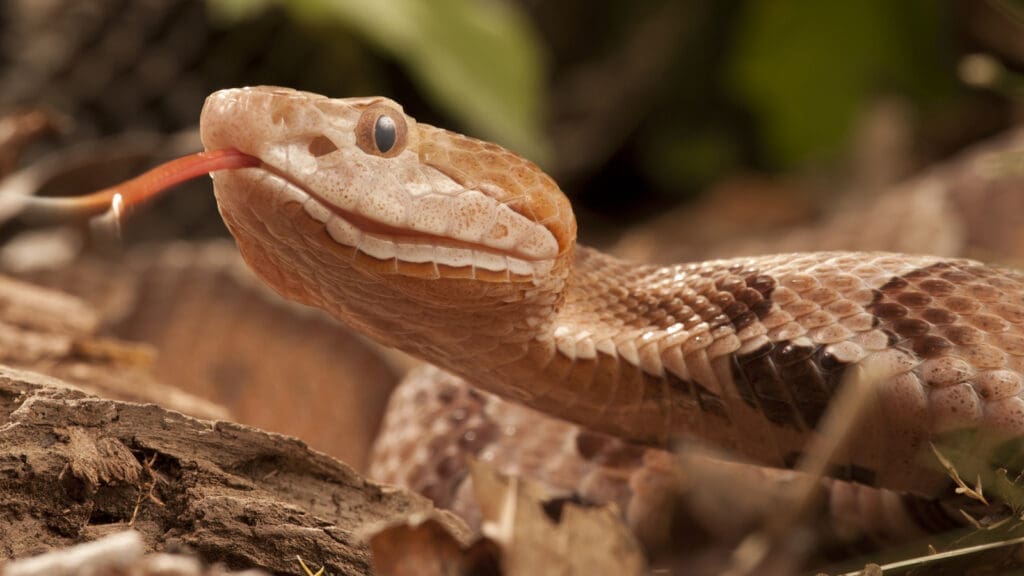A spring heatwave has brought snakes out of hibernation as they search for food, mates, and nesting sites. While their presence may cause concern, most pose little danger and can actually be beneficial.
Kansas has 42 snake species, but only seven are venomous. Copperheads are the most common venomous snakes, while cottonmouths haven’t been recorded in the state since the early 1990s. The risk of snake bites is low, and most incidents occur when people attempt to handle them. Recognizing key features of venomous snakes, such as triangular heads, keeled scales, heat-sensing pits, and elliptical pupils, can help avoid unnecessary encounters.
Snakes help control pests, but to minimize interactions, wildlife specialists recommend the HER method:
- Habitat modification – Remove tall grass, woodpiles, and rocks to reduce hiding spots. A well-maintained yard is less attractive to snakes.
- Exclusion – Seal entry points in homes, as snakes can fit through small openings.
- Removal – If a snake enters a home, professionals use glue boards placed behind furniture to safely capture it.













